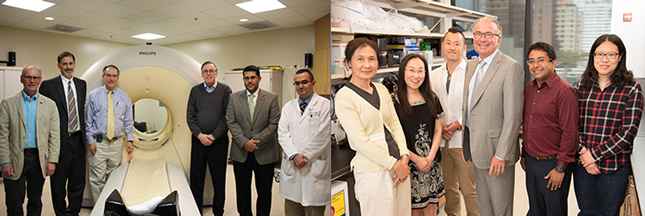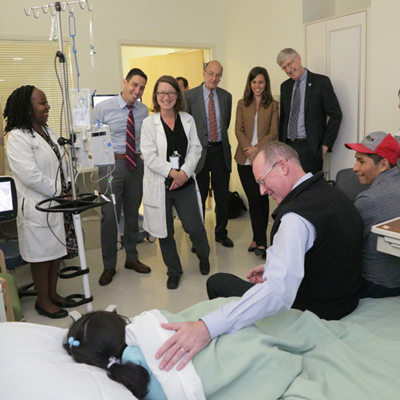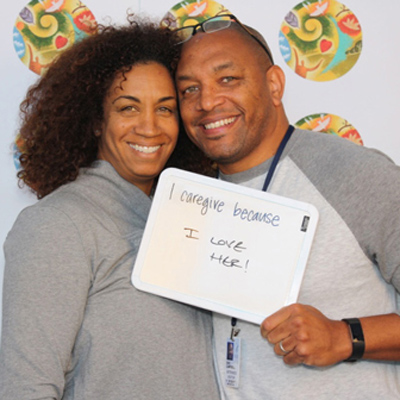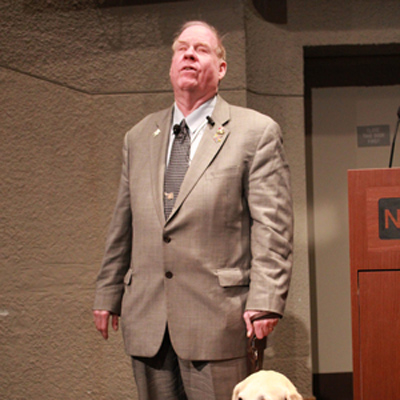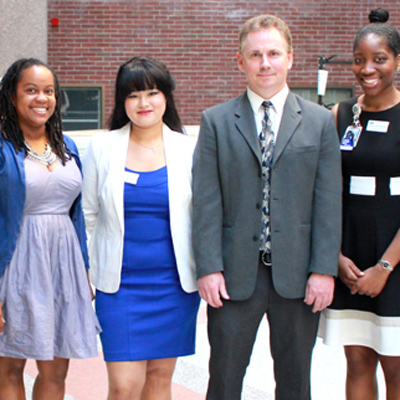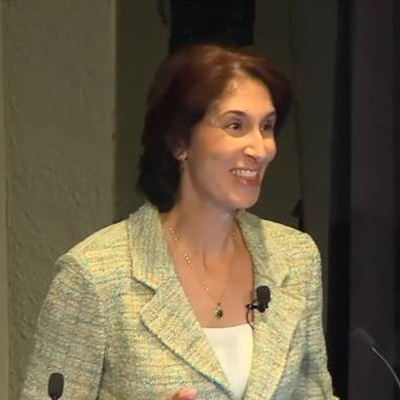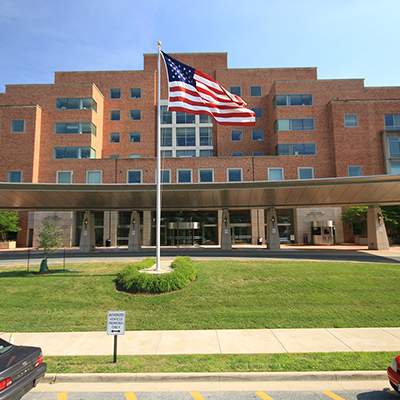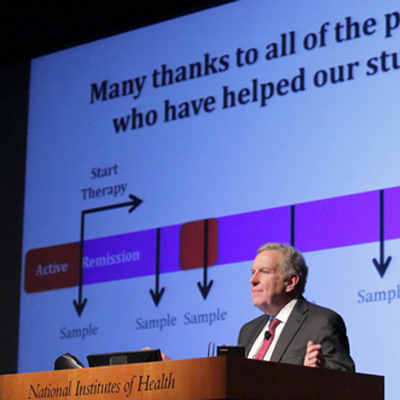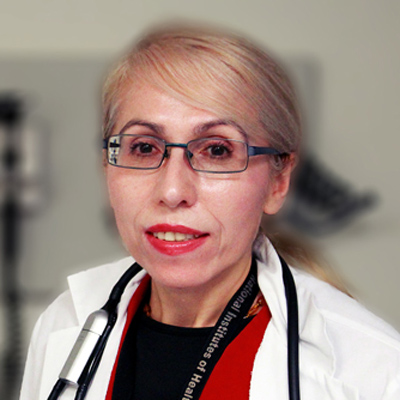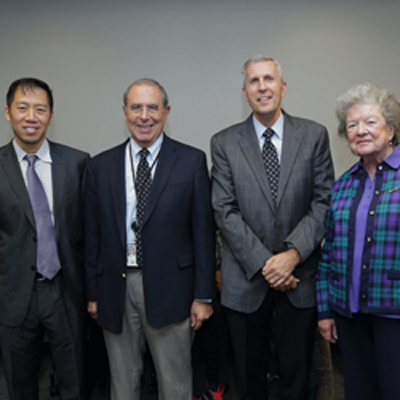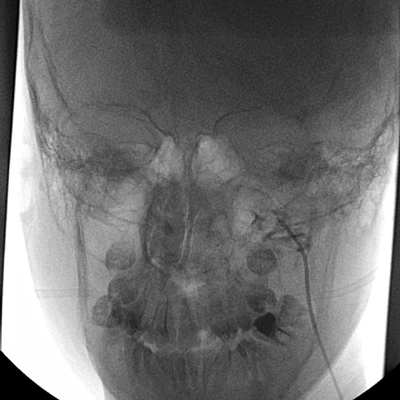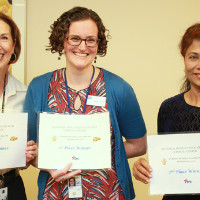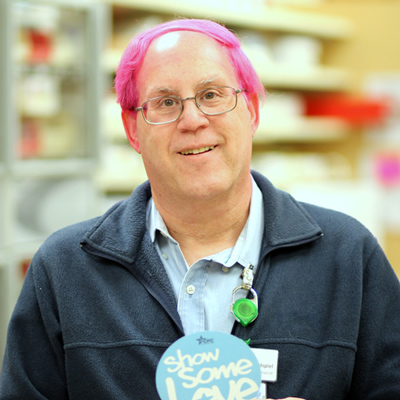Five NIH grants awarded for collaborative research in the Clinical Center, across the U.S.
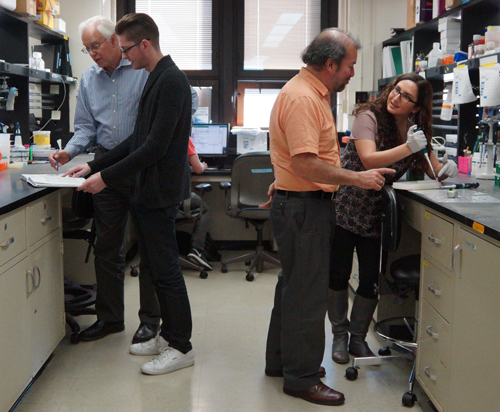
Five new innovative research projects, recently funded by the NIH, will soon bring together NIH intramural researchers with researchers from institutions across the nation. Collaboratively, these top scientists will conduct promising new protocols within the NIH Clinical Center, jointly utilizing some of the broad resources the research hospital can offer.
The research projects are an outcome of the third round of awards given through the granting mechanism Opportunities for Collaborative Research at the NIH Clinical Center (U01). The five collaborative projects will broaden and strengthen the scope of clinical research beyond the work of separate, individual institutions. Ten awards were made in 2014, and an additional 10 in 2015.
These three-year, renewable grants allow for up to $500,000 in direct costs per year. The partnerships will ensure full access to NIH Clinical Center's innovative facilities, equipment and technology.
This year's awards will support the following research:
- Exploring a new therapy for cerebral autosomal dominant arteriopathy with subcortical infarcts and leukoencephalopathy (CADASIL), a neurological disease that can lead to migraines, dementia or death
- Assessing if short-term antibiotic use will affect the healthy bacteria found in the body as well as the subjects' metabolism and immunity
- Analyzing the effectiveness of Prostvac, a cancer vaccine, to help men who have recurrent prostate cancer
- Understanding Lymphangioleiomyomatosis (LAM), a destructive multi-system disease in women, to create better treatments
- Developing new therapies for patients with Neurofibromatosis type 1 (NF1) and malignant peripheral nerve sheath tumors (MPNST), which are highly aggressive andcan spread throughout the body
In early 2017, the NIH will announce recipients of the fourth set of awards within the U01 program. This cohort will receive awards that are, for the first time, four-year renewable grants. Previously, they were renewable over three years. In addition, applicants from both domestic and foreign institutions were eligible to apply.
Cycle 5 applications are due April 11, 2017. Interested applicants, view more information or contact ClinicalCtrPartner@mail.nih.gov. More on the U01 program.
